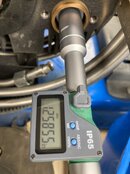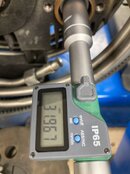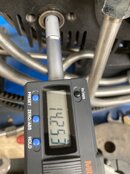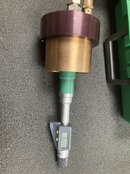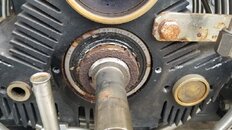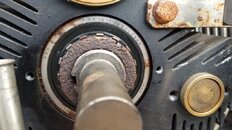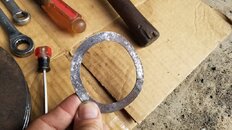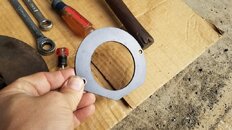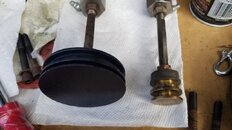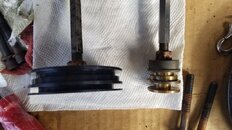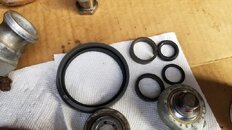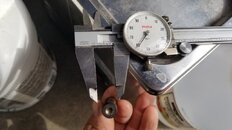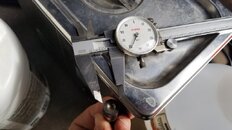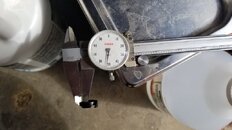Rob.
I let you know the part number of the original vendor SKF N 08 for a reason
Mil Spec components can be very expensive when not required.
Especially when you can obtain a standard commercial version off the shelf and local.
Regarding these two "salty" O-rings the standard ring is a $2 part. The advice was good going for the Teflon variant and that's a $10 adder but it's the the Mil Spec QA you don't need that doubled it. Iain
It's all good.. I whine and moan, but I ordered it all the same. I'm just a cheap SOB.
On that 1st stage liner above a very very light glaze bust cross hatch pattern should suffice.
Check the edge lip at the head end for wear but to me on the photo it looks fine
Change the rusty bolt out for stainless on that motor bracket support bar.
Take off the central spring bearing retaining plate (2 bolts) take a look at the spring wear on the backside of the plate ( lower bottom of the photo)
I will and I'll remove that plate and take pictures.
From this photo check the thrust rider trapeze Blue spring for movement on hand rotation
Change the bolt on the counter balance weight for stainless put it back the same way and not upside down or you will be chasing the compressor around the room from vibration
Also check those cooling coils very very carefully to ensure they are not touching especially underneath and that U shaped short return off the 3rd stage inlet from the 2nd stage separator where if fits between the coils on the 2nd stage discharge side. Iain
I'll check the blue spring for movement. I have checked it in the past (and greased the faces) and it's always been good. I will check the lines for any contact.
Its pretty easy with that SKF Spanner part number (I posted) without a torque wrench
to get 100 ft lbs its spin up the nut until the first gap lines up with the washer tab
Flywheel pulley drive side.
On the swash plate bearing side fan side its the second clear tab your aiming for
and a tad more arm strength. say around a 50 kg lift. Iain
This I don't understand at all, but I'll get in front of the unit and read it a few more times.
Sorry but the first 30 seconds of the 1st video was all wrong.
And that woman's voice on the second put me to sleep.
For a moment I thought I was is some Zen Guru ashram ******** vegan self help group with beads and open toe sandals contemplating my naval. Give me strength.
Well a lot of us around here were REALLY looking forward to a certain somebody to do it right and make a few more videos... but I guess he's drinking tea and playing with his grandson
Thanks Iain. You're like the uncle I never knew I had that lives across the pond who calls to check in every once in a while.



